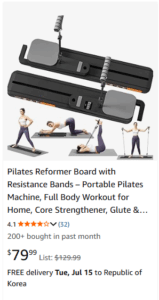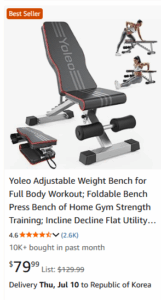As the temperature rises, stopping exercise altogether isn’t the solution—but working out without preparation can be risky. Summer brings a higher risk of heatstroke, dehydration, and low blood pressure, so it’s important to plan your exercise with more caution and structure.
Here are six essential tips to keep exercising safely and effectively in the summer.
1. Exercise in the Morning or Evening
Midday temperatures can easily exceed 30°C (86°F), making outdoor workouts during that time risky.
It’s best to exercise early in the morning (6–9 a.m.) or after sunset.
☀️ Avoid outdoor workouts between 11 a.m. and 4 p.m. when the sun is strongest.
💡 Tip: Start your day with a light jog or brisk walk in the neighborhood after a glass of water.
2. Choose the Right Workout Clothes
Don’t overlook your workout outfit—it plays a key role in regulating body temperature.
Choose breathable, moisture-wicking activewear instead of cotton shirts, which soak up sweat but dry slowly.
-
Light-colored clothes reflect heat
-
Hats and sunglasses protect your head and eyes
-
Sweatbands and sleeves help manage perspiration
3. Hydrate Before You’re Thirsty
If you feel thirsty, you’re already on the road to dehydration.
Make a habit of hydrating before, during, and after your workout:
-
Before: 200–300 ml of water
-
During: Sip water every 15–20 minutes
-
After: Replenish any weight lost through sweat with fluids
🧂 For long workouts, supplement water with electrolytes using sports drinks or a pinch of salt.
4. Know the Signs of Heatstroke
Heatstroke is a serious, potentially life-threatening condition when your body overheats in high temperatures.
Early warning signs include:
-
Excessive sweating followed by clammy skin
-
Dizziness, nausea, or muscle cramps
-
Rapid heartbeat, flushed and hot skin
-
Trouble concentrating
☑️ If you notice these signs, stop exercising immediately, move to a shaded or air-conditioned area, and rehydrate.
5. Indoor Workouts Are a Great Alternative
On extremely hot days or during heat advisories, consider working out indoors where it’s cool and safe.
-
Follow YouTube home workout videos
-
Use a treadmill, indoor bike, or resistance bands
-
Break workouts into shorter sessions throughout the day
🌿 Indoor workouts can be just as effective for maintaining fitness and heart health.
6. Adjust Workout Intensity for the Season
You may not need to work as hard in the summer to get the same benefits.
Reduce intensity compared to spring or fall to avoid overexertion.
-
Cardio: Scale back to 70–80% of your usual effort
-
Strength training: Focus on form rather than heavy loads
-
Duration: Keep sessions under 30–40 minutes
💬 Don’t fall for the myth that sweating more means burning more fat—summer sweat mostly reflects water loss, not fat burning.
Final Thoughts: Exercise Smart, Not Just Hard
The goal is to stay healthy—not to push your body past its limits in the heat.
With careful planning and mindful adjustments, you can safely maintain your workout routine all summer long.
📌 Summer Exercise Safety Checklist
✅ Morning or evening workouts only
✅ Wear breathable, light-colored activewear
✅ Hydrate with water and electrolytes
✅ Recognize early heatstroke symptoms
✅ Take advantage of indoor workouts
✅ Lower intensity to suit the season
Stay cool, stay active, and stay safe this summer!
Smart exercise habits are the key to health and vitality—even during a heatwave. ☀️🏃♂️

